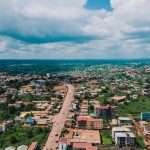In a world fueled by exponential economic growth, there exists a stark disparity that casts a shadow on the less fortunate nations. The criterion to pinpoint the poorest countries predominantly revolves around GDP per capita, which, when adjusted for Purchasing Power Parity (PPP), provides a clearer picture of economic standings. This measure helps us navigate the veil of nominal GDP figures, accounting for the cost of living and inflation rates, offering a more accurate portrayal of a citizen’s standard of living in different countries. This article unfolds the narrative of the five poorest countries in the world in 2023, scrutinizing the systemic and external challenges they face.
Methodology: Measuring Economic Poverty
GDP per capita measures a country’s economic output per person, calculated by dividing the Gross Domestic Product (GDP) by the population. However, merely analyzing GDP per capita can sometimes be misleading due to varying cost of living and inflation rates among countries. Hence, GDP per capita (PPP) is utilized to make a fair comparison, providing a more realistic economic landscape.
Identifying the Poorest Countries
As of 2023, the list of the poorest countries, as estimated by the International Monetary Fund (IMF), is spearheaded by nations predominantly located in Africa. The economic adversity in these regions is further exacerbated by political instability, inadequate infrastructure, and internal conflicts, among other challenges.
List of 5 Poorest Countries in the World:
| Rank | Country | GDP-PPP ($) |
|---|---|---|
| 1 | South Sudan | 515.75 |
| 2 | Burundi | 891 |
| 3 | Central African Republic | 1,130 |
| 4 | Somalia | 1,370 |
| 5 | Democratic Republic of the Congo | 1,474 |
South Sudan
Despite being rich in oil reserves, South Sudan, the youngest country in the world since its independence in 2011, grapples with significant economic hardships. The ongoing internal conflicts and severely limited infrastructure have hindered the nation’s progress. A large portion of its population relies on traditional agriculture. However, frequent disruptions due to violence and extreme weather events like drought have perpetuated poverty, making it the poorest country in the world with a GDP-PPP of $515.75.
Burundi
Burundi’s economic woes are exacerbated by its political instability, historical civil strife, and inadequate infrastructure development. Around 80% of its population, over 13 million, relies on subsistence agriculture, leading to high food insecurity. Rapid population growth and a past tainted by a 12-year civil war contributed to its ranking as the second-poorest country with a GDP-PPP of $891.
Central African Republic
The Central African Republic (CAR) is rich in natural resources like gold, oil, uranium, and diamonds. However, its wealth contrasts starkly with the widespread poverty experienced by its citizens. Political instability, armed conflicts, and inadequate infrastructure contribute to its economic challenges. The adverse economic situation is further exacerbated by global crises, rendering it the third-poorest country with a GDP-PPP of $1,130.
Somalia
Somalia, located in the Horn of Africa, has been tormented by years of political instability, armed conflicts, and humanitarian crises. The absence of a functioning central government, limited infrastructure, and widespread poverty have hindered the nation’s progress. Recent global events, including food price hikes triggered by external factors, have further strained its economy, marking it the fourth-poorest country with a GDP-PPP of $1,370.
Democratic Republic of the Congo
The Democratic Republic of Congo (DRC) has abundant natural resources, including cobalt and copper. However, the majority of its population lives in poverty. Political instability, inadequate access to basic amenities, and high fertility rates have kept the nation in economic hardship. Despite its potential, DRC is the fifth-poorest country with a GDP-PPP of $1,474, reflecting a narrative of economic disparity amidst natural wealth.
Underlying Challenges: A Closer Examination
The overarching causes of poverty in these nations are multifaceted and interlinked. Here’s a breakdown of the common factors contributing to their economic plight:
- Political Instability:
- Persistent political turmoil, including civil wars, armed conflicts, and disputed elections, severely hampers economic growth and development in these countries.
- Inadequate Infrastructure:
- Lack of basic infrastructure such as roads, electricity, and healthcare facilities hinders economic development and foreign investments, keeping these nations in a cycle of poverty.
- Resource Curse:
- Despite being endowed with abundant natural resources, the inability to manage and utilize these resources effectively due to corruption, poor governance, and external exploitation exacerbates poverty.
- External Shocks:
- Global crises like the COVID-19 pandemic and geopolitical events have adversely affected these nations, exacerbating food insecurity and other economic challenges.
- Climate Change and Natural Disasters:
- Located in regions prone to extreme weather events and climate change effects, these countries face recurrent droughts, floods, and other natural calamities, disrupting agriculture and livelihoods.
- Low Human Development:
- High levels of illiteracy, lack of access to primary education and healthcare, and high fertility rates contribute to a vicious cycle of poverty.
- Lack of Diversified Economies:
- Heavy reliance on a single or a few sectors, often subsistence agriculture or a particular mineral resource, makes these economies highly vulnerable to market fluctuations and external shocks.
- Geographic Disadvantages:
- Being landlocked and/or located in conflict-prone regions with limited access to maritime trade further hinders economic growth and integration into the global economy.
- Inadequate Foreign Investment and Aid:
- Due to the abovementioned issues, attracting foreign investment and aid becomes challenging, limiting these countries’ ability to improve their economic situations.





